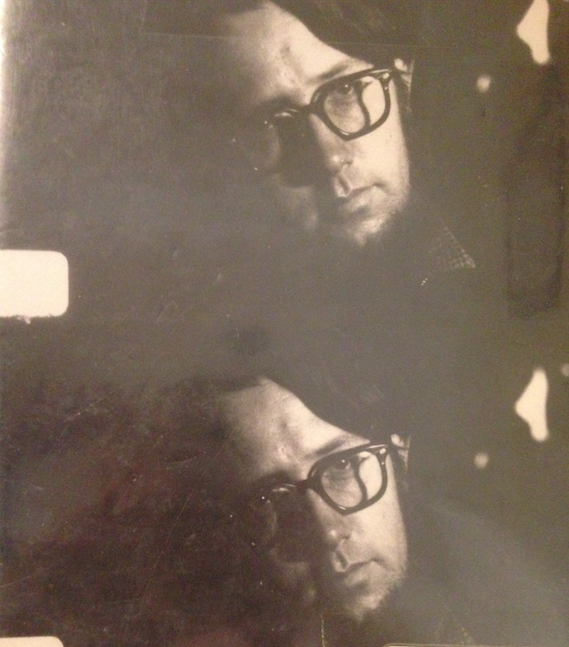An irreplaceable part of what I understand as studying is easing into a nonlinear, felt relationship with what's at hand (and what's not), arriving at and reading the exchangeable portions of authorship and writing while also sifting into the ephemera and noise that show how that writing is a life. If not in the archive, this usually means errant searches online for recordings and photographs, a more organized look via PennSound or UbuWeb, and deep searches on rare book sites like ABAA and Abebooks. Rarely, videos of poets might emerge. These videos carry an aura. I'm always a little stunned.
I was thinking of how special these videos are after a friend recently circulated a video of Kenward Elmslie made available by Ron Padgett. As Padgett describes: "Maxine Groffsky rediscovered a three-minute film she made of Kenward in 1972. In the first part he is in Louisville for a production of his musical (with Claibe Richardson) The Grass Harp. In the footage with him are the poet Gerritt Henry and the fellow who was directing the Louisville presentation. In the second part Kenward is in Calais, VT, in his vegetable garden and then walking back to his house. The film concludes with a guest star appearance by his dog, Whippoorwill."
The stills to the right are from the short film. The Jerry's Restaurant sign is just great, such a surprising yet perfect intersection of New York School artistic elegance with the monumental Americana that informs the humor of writers like Elmslie, John Ashbery, and Kenneth Koch. The shots from Calais are gorgeous, including iconic Whippoorwill in the yard, the dog that appears in paintings by Joe Brainard and who James Schuyler describes in "The Morning of the Poem," as my friend Aaron reminded me: "Yes, that whippet is / The one I nominate for terrestrial immortality … Love, love / Is immortal. Whippoorwill, I know that.” It's great to actually see the Calais house, too, which is described so often in Padgett's memoir of Brainard, Joe.
Below are just a few videos I've returned to often, including a selection from Larry Fagin's home movies from 1968-69, the Ed Sanders portion of "USA: Poetry" that starts with the more well-known Frank O'Hara section, a section of a Spanish documentary on the Beat Generation that includes (from 7:56-9:27) a walk-through tour of Ted Berrigan's and Alice Notley's apartment at 101 St. Marks Place, a hijacked video of a Notley lecture by Cassandra Gillig, and a 1990 reading by Elmslie at the Poetry Project. I'm always devoted to videos of readings, and there are so many incredible ones on PennSound, the SF Poetry Center Digital Archive, and scattered across YouTube. But the video recordings of these poets being themselves, not reading poems, being people, and being in places they inhabited -- those videos carry a little magic. The archive is always alive, but it's special to see it in motion, body, kitchen, paintings, pets, and all. There are too many details in the videos below to describe, too many little moments that act as artifacts. Like in the Sanders video from late 1965 we're inside Peace Eye Book Store with him, seeing the books on display (including copies of William Burroughs's Time, Philip Whalen's Every Day, and the magazine Mother with a Brainard cover), and then Sanders in front of the East Village Other newspaper offices -- it's incredible. I'm not interested in whether they're representative or accurate, performative or realistic, just that they're these particular images of this particular moment or movement. You become familiar with a red sweater or two, a mannerism, and you start to recognize the poems a little differently. I'd like to watch these videos entirely unprofessionally. I think that's what I'm advocating for. I mean, I'm watching them and studying, whatever that needs to be.








